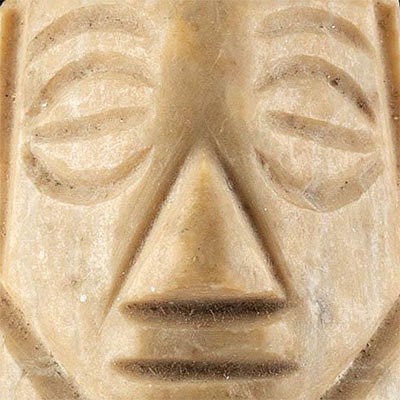Native American Eastern Woodland Archaic Bannerstone
Lot 80
About Seller
Artemis Gallery
686 S Taylor Ave, Ste 106
Louisville, CO 80027
United States
Selling antiquities, ancient and ethnographic art online since 1993, Artemis Gallery specializes in Classical Antiquities (Egyptian, Greek, Roman, Near Eastern), Asian, Pre-Columbian, African / Tribal / Oceanographic art. Our extensive inventory includes pottery, stone, metal, wood, glass and textil...Read more
Estimate:
$800 - $1,200
Absentee vs Live bid
Two ways to bid:
- Leave a max absentee bid and the platform will bid on your behalf up to your maximum bid during the live auction.
- Bid live during the auction and your bids will be submitted real-time to the auctioneer.
Bid Increments
| Price | Bid Increment |
|---|---|
| $0 | $25 |
| $300 | $50 |
| $1,000 | $100 |
| $2,000 | $250 |
| $5,000 | $500 |
| $10,000 | $1,000 |
| $20,000 | $2,500 |
| $50,000 | $5,000 |
| $100,000 | $10,000 |
| $200,000 | $20,000 |
About Auction
By Artemis Gallery
Jun 3, 2021
Set Reminder
2021-06-03 12:00:00
2021-06-03 12:00:00
America/New_York
Bidsquare
Bidsquare : It's a Small World | Diminutive Artifacts
https://www.bidsquare.com/auctions/artemis-gallery/its-a-small-world-diminutive-artifacts-7031
Join us for a very special auction featuring art & artifacts from East to West, North to South, and everywhere in between - with one small thing in common - size! Everything in this auction is approximately 6 inches or less - perfect for that last bit of shelf space in your curio cabinet! Artemis Gallery info@artemisgallery.com
Join us for a very special auction featuring art & artifacts from East to West, North to South, and everywhere in between - with one small thing in common - size! Everything in this auction is approximately 6 inches or less - perfect for that last bit of shelf space in your curio cabinet! Artemis Gallery info@artemisgallery.com
- Lot Description
Native American, Southern United States, Missouri, Cole County, Archaic Period, ca. 5000 to 1000 BCE. A fine example of a bannerstone hand-carved and drilled from a nice red clay stone. This bannerstone represents the "humped" type as defined by archeologist Byron Knoblock in his research of bannerstones. The thick center is laterally drilled through to both ends. Bannerstones of various sizes with elongated and even bowtie or butterfly shapes, have been found across the eastern part of North America, but their use is not fully understood. They may have served as tools to aid in hunting and/or may have served a symbolic function. This one is highly polished and great care is evident in shaping this piece. Size: 1.25" L x 0.8" W x 2.25" H (3.2 cm x 2 cm x 5.7 cm)
Bannerstones remain an archaeological mystery. For many years, inspired by research done by a former physicist, archaeologists believed that bannerstones were used as weights to give atlatls greater power and control. Later experimental archaeology proved that this was not true - but did open the possibility that the bannerstone helped with fatigue when holding an atlatl still, while stalking skittish prey like deer. However, their elaborate designs, and some examples that are too large to have ever been useful, suggest that they also had a ritualistic purpose.
Provenance: private Kansas City, Missouri, USA collection; ex-John Townsend collection, formed in the 1970s and earlier
All items legal to buy/sell under U.S. Statute covering cultural patrimony Code 2600, CHAPTER 14, and are guaranteed to be as described or your money back.
A Certificate of Authenticity will accompany all winning bids.
We ship worldwide and handle all shipping in-house for your convenience.
#162011Find site written on surface. Chips and nicks to faces around opening and peripheries. Surface wear and scratches as expected with age and use. Polished with smooth surface.Condition
- Shipping Info
-
All shipping is handled in-house for your convenience. Your invoice from Artemis Gallery will include shipping calculation instructions. If in doubt, please inquire BEFORE bidding for estimated shipping costs for individual items.
-
- Buyer's Premium



 EUR
EUR CAD
CAD AUD
AUD GBP
GBP MXN
MXN HKD
HKD CNY
CNY MYR
MYR SEK
SEK SGD
SGD CHF
CHF THB
THB













